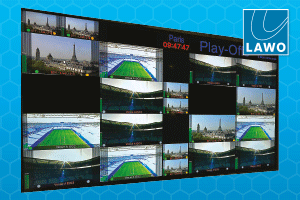Al Aan TV recently shifted to 16:9 widescreen format to give viewers better quality screen images. Today the majority of television sets have 16:9 screen format known as widescreen instead of 4:3 format. The 16:9 widescreen format has been introduced because it corresponds more closely to the characteristics of the human field of vision and visual habits in comparison to […]

Al Aan TV recently shifted to 16:9 widescreen format to give viewers better quality screen images.
Today the majority of television sets have 16:9 screen format known as widescreen instead of 4:3 format. The 16:9 widescreen format has been introduced because it corresponds more closely to the characteristics of the human field of vision and visual habits in comparison to the 4:3 format. Widescreen format takes into account the fact that human peripheral vision is pronounced more on the horizontal axis than on the vertical axis.
The aspect ratio of a widescreen format is 1.78; the ratio between the horizontal and vertical angle of vision of a motionless human eye is 1.64; from this it can be seen that the aspect ratio of 16:9 format is closer to that of the human eye than that of 4:3 format.
Raad Haddadin, Head of Technical at Al Aan TV said: There are many benefits that favour 16:9 widescreen broadcasting which include the artistic and picture-making possibilities; the possibility to move an important feature in the picture away from the centre to create more overview or the possibility of improved alignment of fore- and background elements – resulting in a better 3D-effect and a more naturally proportioned picture.
He added The technological innovations and prevailing market conditions also play in favor of the widescreen. Screen technology is advancing fast and new flat screen televisions LED are now only available in 16:9 format. The 4:3 screen format used previously is definitely on the way out.













































































